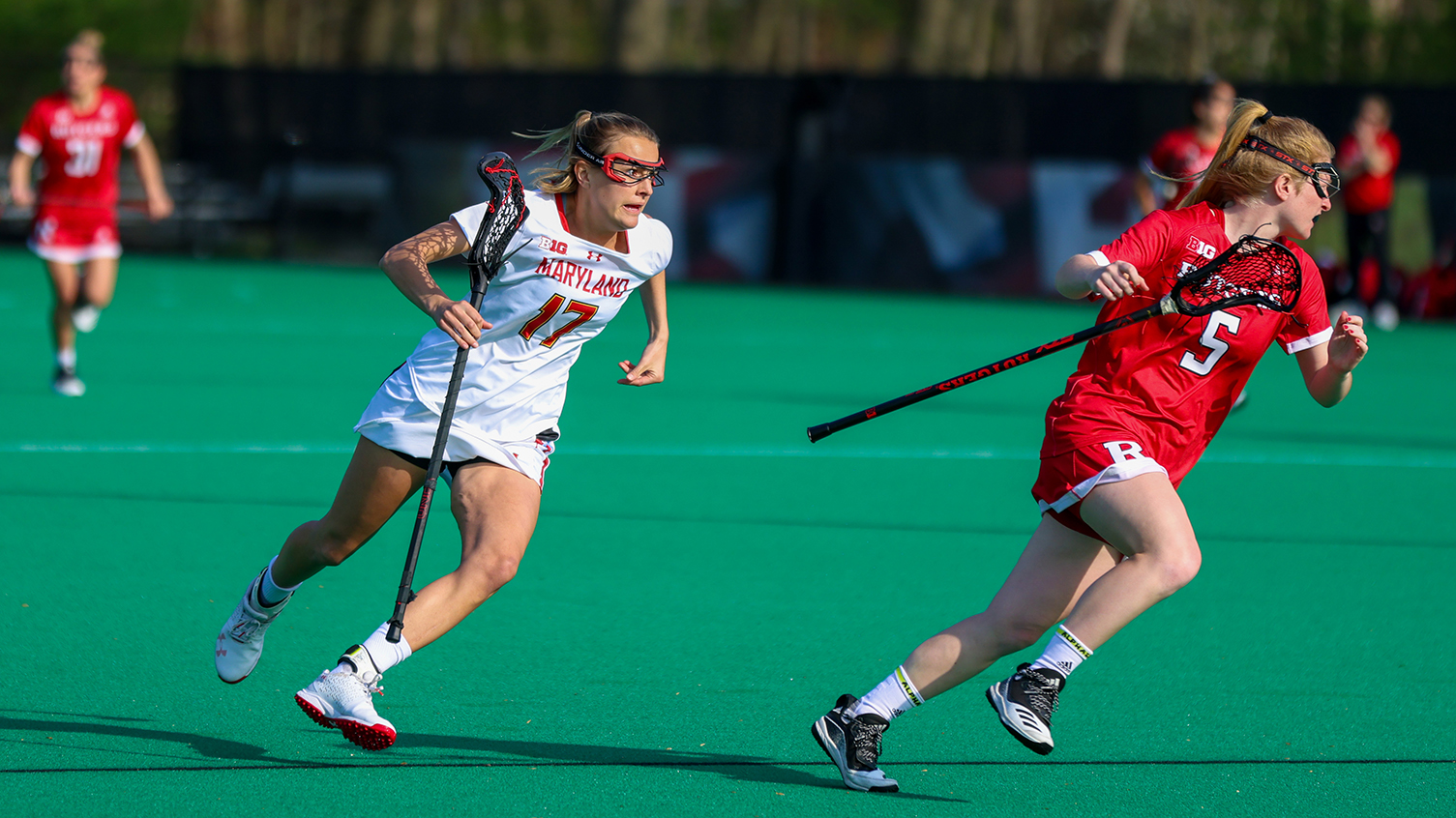Maryland women’s lacrosse lost to Rutgers for the first time in program history on Sunday.
But what might be more startling for the Terps was another first they attained this season — having two scoreless droughts of 20-plus minutes in a single game.
Maryland has struggled all season with remaining consistent on the attacking end, often leaning on the unexpected strength found in an inexperienced backline. But, with the issue becoming more present in the final regular season game, the Terps have to address the problem with their attacking unit.
As coach Cathy Reese’s squad prepares for the Big Ten tournament, it will need to learn to halt opposing scoring runs on the offensive end to keep up with the fierce competition.
“We can’t have lapses like that and expect to come away with wins in our conference,” Reese said after the narrow 16-14 loss to the Scarlet Knights. “We just can’t.”
The first drought came in the opening half of the game. Brindi Griffin finished her hat trick with just over 20 minutes left in the first half, faking a shot on Sophia Cardello in net before slotting one past the keeper. Maryland’s 4-1 run looked to be one of their best offensive starts to a game, going 4-of-6 on shooting.
But then, the scoring stopped. After Griffin’s goal, the Terps failed to find the back of the net for the rest of the half.
[Late rally falls short as Maryland women’s lacrosse loses to Rutgers, 16-14]
Out of the break, Maryland was fired up. The Terps put five goals past Cardello in under six minutes, quickly tying the game.
But once again, the goals stopped coming. It took exactly 20 minutes for Maryland to score again.
Once the Terps found that much-needed goal, they reeled off five straight markers in just over three minutes. Hannah Leubecker showed off her attacking prowess once again, netting three goals in that span.
“Sometimes we tend to wait until things aren’t going our way or until we get a specific play that kind of gives us momentum to get on a run,” Leubecker said.
It was too late for Maryland to complete a comeback. From those lengthy scoring droughts came Rutgers’ offensive booms, making the odds of Reese’s side coming away with a win increasingly unlikely.
In the first half, the Scarlet Knights notched six consecutive goals. In the second half, they tallied seven straight.
For the Terps, Sunday represented the worst of their scoreless droughts. However, the tendency had been building for a few games.
Maryland had two streaks of 16-plus minutes without a goal against Penn State one week ago and three lengthy scoreless runs versus Johns Hopkins on Wednesday, one of which lasted over 23 minutes.
Scoring droughts were an issue early in the season. Four of the Terps’ first five games featured two 10-plus minute runs without a goal, but for the most part, they still came away with wins. Now, the problem is costing them key games down the stretch.
[Maryland women’s lacrosse’s Brindi, Grace Griffin were at the heart of Johns Hopkins win]
Reese said the team has had issues with shooting, attacking the cage hard, moving the ball quickly and dodging — all essentials to offensive success. Bringing intensity for a full 60 minutes can solve this.
“We know, as coaches, what they’re capable of,” Reese said. “[The players] need to know about themselves as much as we know about them, where they can kind of turn that confidence inward and step up their game.”
Reese added she felt her team only adjusted its mentality after the game turned against its favor. She said if it couldn’t find its tenacity sooner in matchups, it wouldn’t be able to beat any teams in its path.
Locked in as the No. 2 seed in the Big Ten tournament, Maryland’s first round matchup will be against the last place team, either Penn State or Michigan. The Terps swept the Wolverines back in February but dropped both meetings against the Nittany Lions this year.
What will be key for Maryland now is finding early aggression up front and avoid taking a postseason loss for its problems with consistency.
“We just need to figure out how to get that energy beforehand and really focus in and each do what we need to do individually,” Leubecker said.



